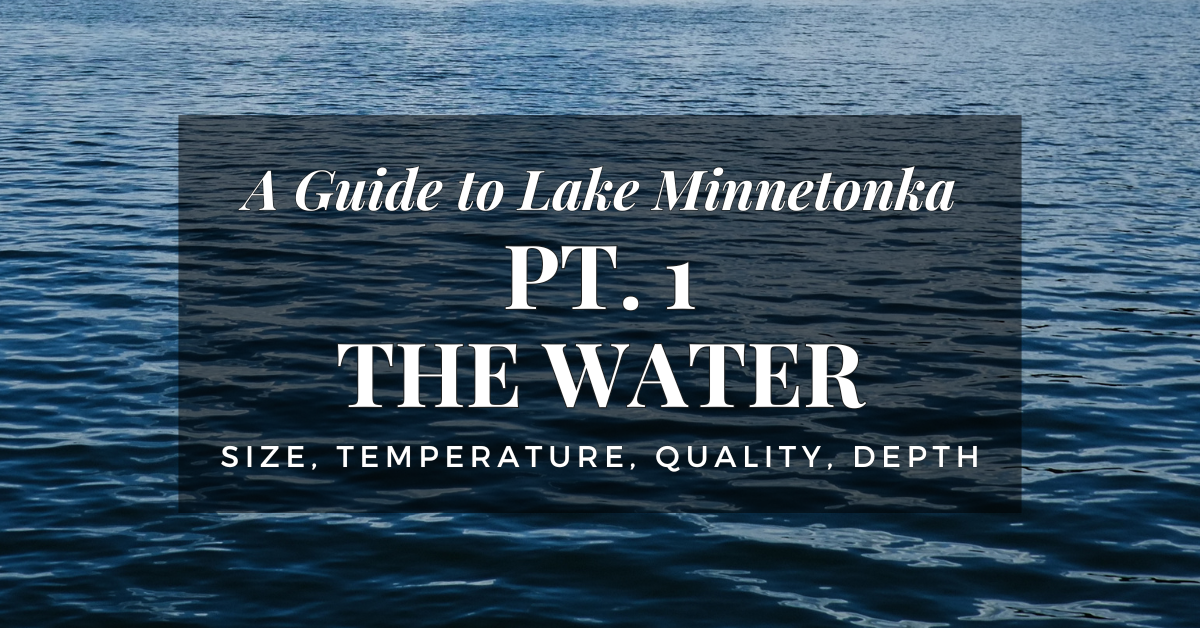This will be the first in a series of articles dedicated specifically to Lake Minnetonka itself. This article covers the lake’s size, shape, scale, and water. In later articles, I’ll get into the bays, the fish, the water life, and all recreation around the lake.
What’s in a Name?
What does Lake Minnetonka mean?
Lake Minnetonka is most commonly translated as “big water.” The name comes from the native Dakota Indians, where mni meant water and tanka (taƞka) meant big, great, large, or vast. At least, that’s what we’ve been told. I don’t speak Dakhód’iapi.

First, let’s just admire it’s beauty. Look at that picture. Is there any other lake so expansive, and so stochastic, at this scale? No, there’s not.
Size Matters
Lake Minnetonka is approximately 14,528 acres in size. That’s equivalent to the size of Manhattan in New York, where over 1.6 million people live, or 17,200 football fields.
Although it’s an imprecise measurement, Lake Minnetonka is estimated to have 125 miles of shoreline. If you were to walk 8 hours a day, it would take you a full work-week to walk around the entire lake.
Taking depth into account, Lake Minnetonka’s volume exceeds 90,000,000,000 gallons of water. That’s over 140,000 Olympic swimming pools, or the entire annual water usage of approximately 1,400,000 American households.
Water Flow, Temperature, Quality, Quantity & Depth
Water Flow
Let’s take a look at that map again. See that furthest western bay amongst the “bottom” half of the lake? Well, that’s Halstead’s Bay, and it’s the “upper” lake (the main source where water flows in to Lake Minnetonka). And that eastern-most bay, along the “top” of the lake? That’s Gray’s Bay, the “lower” lake (where water flows out of Lake Minnetonka).
Basically, the bottom part of the lake is “upper,” and the upper part of the lake is “lower.” Make sense?

Temperature (Temp)
In the summer (June – September), Lake Minnetonka’s water temperature typically runs between 68°F and 73°F. But the deeper you dive, the colder it gets.
In the winter, well, the lake is frozen. When it’s iced over, the surface ice sheet is below 32°F, and it’s actually slightly warmer underneath the ice.
| Month | Average Temp (°F) | Range (°F) |
| April | 42.3 | 35.6 – 57.2 |
| May | 55.4 | 42.8 – 68.0 |
| June | 68.9 | 59.0 – 78.8 |
| July | 73.2 | 66.2 – 78.8 |
| August | 72.5 | 64.4 – 78.8 |
| September | 66.6 | 53.6 – 84.2 |
Water Quality
Lake Minnetonka Water Quality is measured a few different ways by the Minnehaha Creek Watershed District (MCWD) and Minnesota Pollution Control Agency (MPCA). Samples are taken regularly to measure clarity, colored dissolved organic-matter (CDOM), and chlorophyll-a.
Impaired Waters
Only four bays on Lake Minnetonka are considered “impaired” by the MCWD due to excessive phosphorus concentration in the summer: Halstead’s Bay, Jennings Bay, Stubb’s Bay, and West Arm.

Invasive Species
Zebra mussels are unfortunately now found throughout the entire lake. These little stinkers cluster together and attach themselves to hard surfaces, which disrupts the ecosystem and wears on boats, docks, and other infrastructure. On the positive side, they do at least slightly improve water clarity.
Other invasive species found in Lake Minnetonka are Eurasian watermilfoil, Curlyleaf Pondweed, the Common Carp, and Flowering Rush.

Water Quantity
Lake Minnetonka has a dam at Gray’s Bay to help manage the lake level and discharge into Minnehaha Creek. The MCWD tries to prevent shoreline flooding where possible and adjusts the discharge based on time of year, creek capacity, and seasonal precipitation. The general estimate is that Lake Minnetonka has approximately 90 billion gallons of water.

Water Depth
The average depth of Lake Minnetonka is typically placed around 30 feet, but the lake’s depth varies significantly between the interconnected bays.
The undisputed deepest spot in Lake Minnetonka is in Crystal Bay, at over 110 feet deep.
That’s enough about Lake Minnetonka water. In future articles, I’ll cover the different bays, the restaurants, and all the amenities around Lake Minnetonka.






Leave a Reply